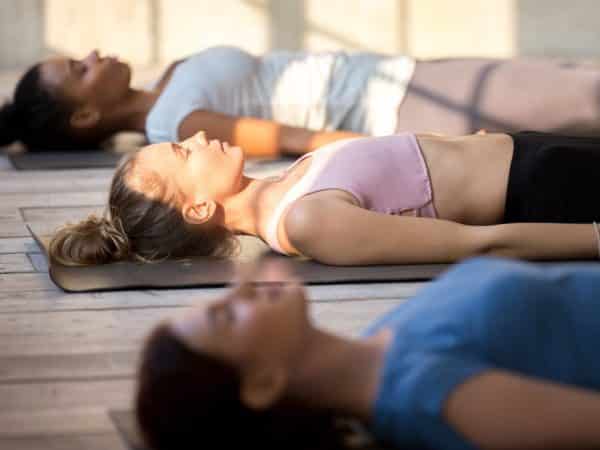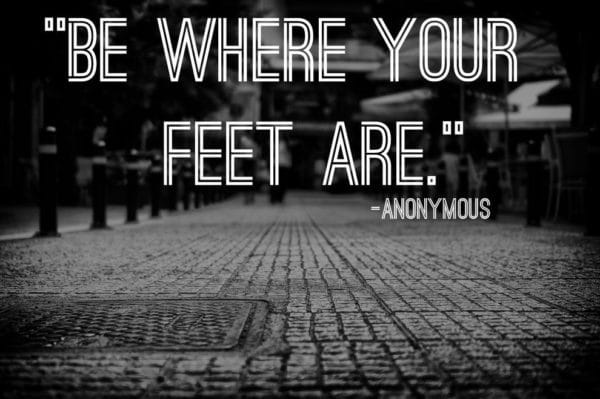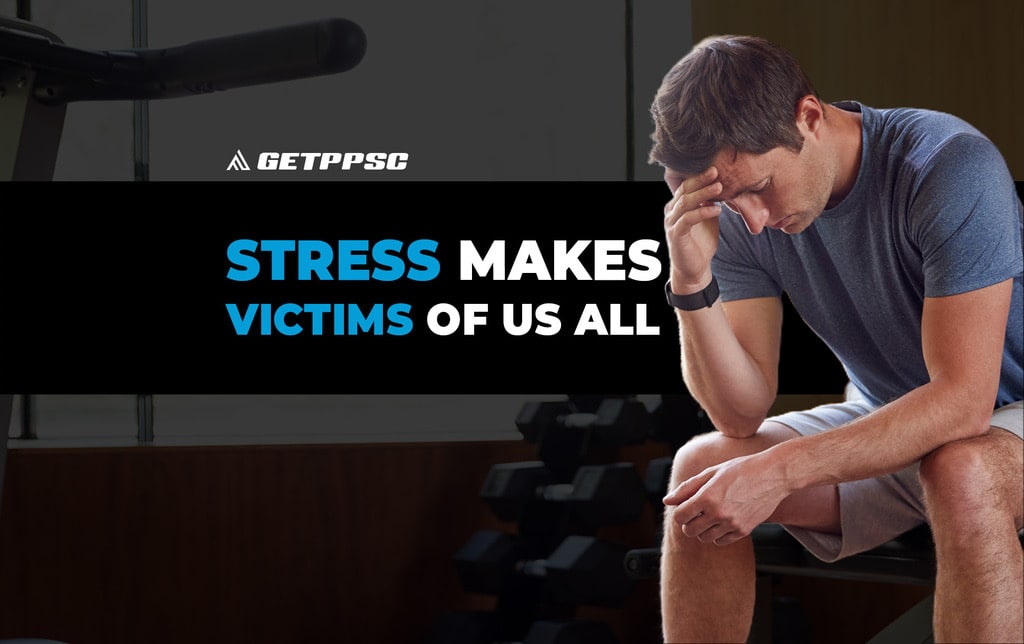Stress makes victims of us all. It is inevitable. There isn’t a single person who won’t feel the effects of stress in some way. It can manifest into disordered habits like sleeping too much, not sleeping enough, eating too little, overeating, drinking, drugs, anxiety, depression, and more.
Stress is a multi-faced creature who is capable of living in your body like a parasite waiting to drain the life from you, but you can work with it and beat it at its own game.
STRESS IN YOUR SYSTEM

Our bodies are highly equipped to deal with the day to day situations we run into thanks to millions of years of evolution.
The sympathetic nervous system is your body’s fight or flight response. It directs the body’s rapid involuntary response to dangerous or stressful situations. It is not just isolated to a situation like a car crash or the IRS sending you a bill for ten years of back taxes. The majority of us live our lives in a continual sympathetic state without even realizing it.
You are annoyed at work, you train hard, your kids are screaming around the house, your sleep is mediocre at best, and you don’t take time to relax. That’s not helping.
No, relaxing is not surfing social media, posting about politics, and arguing over them. Those actions contribute to your mild perpetual sympathetic state, not to mention the effect that blue light has on your sleep as you lay in bed scrolling with the lights out.
THE ROOT
The sympathetic nervous system is like throwing gas onto a fire – and the fire is the vagus nerve. This nerve runs from the head, neck, and down into the gut. This nerve is responsible for heart rate, respiratory rate, sweat, anxiety, digestion, and more.
Did you ever have anxiety and stress so intensely that you feel sick after eating? Did you ever have stomach issues when you have anxiety, such as eating and throwing up or running to the bathroom with diarrhea? You can thank the stimulation of the vagus nerve for that.
A sympathetic system, i.e., low vagal tone, contributes to inflammation, stress, and obesity. It also contributes to a lowering of insulin sensitivity and an increase in cortisol. The simple fact is, staying in a perpetual mild sympathetic state is doing nothing for your health and recovery.
On the flip side, the parasympathetic state does the exact opposite of a sympathetic state. It also is more ideal for absorbing nutrition, burning calories, and secreting insulin. This state is superior for thermogenesis, managing cortisol secretions, and controlling anxiety.
You can easily see why stress is called “The Silent Killer.” when you look at how the sympathetic and parasympathetic states work in tandem with your body.
The trick is to mitigate the sympathetic state as much as possible by training it to come out when needed and training to suppress it when it releases the Kraken on you.
AVOID EXCESSIVE STIMULANTS

It is trendy to brag about how much coffee you drink in a day or take a pre-workout with 400mg of caffeine as a crutch, for example. Ronnie Coleman’s pre-workout has 420mg of caffeine. That is 4.5 cups of coffee in a serving!
Most people are reaching for that next cup of coffee before they even finished their first. If you don’t know this, Caffeine take around 10 hours to completely clear from the system after consuming it. 6 hours after consuming coffee, 1/2 of the caffeine is still in your system. So when you reach for that cup of coffee as “dessert” you shouldn’t be flabbergasted why you got shitty sleep.
Caffeine directly correlates to the sympathetic nervous system and will take hours to leave your system. Do yourself a favor, and work on removing that crutch from your life. I am not saying don’t ever drink caffeine; I love coffee, but use caffeine wisely and not as a substitute for proper sleep.
MEDITATE AFTER TRAINING

Wait what? I am hardcore, bro. I train like a warrior; I am here to SFW and dominate the competition.
If you need to approach lifting in that mindset, you should return to a parasympathetic state as fast as you can when you are finished.
Giving your body a fast-track to downtime with a quick 5-8 minute breathing exercise is a great way to start the recovery process and prime your body to digest your next meal more effectively.
As soon as your last set is finished, chat with your gym friends, post your update to Instagram, go to your car, and start parasympathetic breathing.
I prefer laying down with your feet elevated, but I understand not everyone wants to do that in a commercial gym, so this is a possible compromise.
Get into a comfortable position in your car, set a timer for five minutes, and start to breathe deeply. Use your nose, not your mouth. I want you to focus on the breath, and when your mind starts to wander, bring it back to focusing on the breath. Don’t stress it if you can’t get your mind back to the breath each time perfectly; this is a work in progress.
After the five-minute timer goes off, you are finished. Notice your heart rate and how quickly it came down when taking this little time to focus on breathing.
You will enter parasympathetic mode faster, recovery better, and prime your body to take in nutrients more efficiently when you are not pumped full of the high post-workout.
Want to relax?
Try 4-7-8 breathing. Inhale through the nose for a count of 4, hold the breathe without stress for a count of 7, and exhale all the air our for a count of 8. Exhalation helps calm the body down and slow down activity.
FOCUS ON BREATH BETWEEN SETS

How many of you waste time surfing the net, chatting with friends, or taking longer than needed rest periods between sets? We have all done it, and most of us do it. The gym has become a social event for many rather than a place to get work done. I don’t begrudge anyone that time or doing what they wish in the gym, but if you want to maximize your training, this is a helpful tip.
Instead of checking those social media comments, take deep, controlled breaths. We can call it walking meditation if you want to give it a name. You may not be able to get your heart rate down like with the post-workout session, but you will remove distractions from your training, focus on yourself, and it brings us into the next step; being present.
BE PRESENT

This isn’t a stress-relief step but more of a lifestyle relief step. As I alluded to earlier, we exist in a world of distractions and gratification. We are attached to our phones, work from home, which makes it hard to separate business and personal, and we can press a few buttons to order and buy anything we want. We video our workouts, upload the video instantly to an IG story, check to see who commented on it, and more.
The art of being present is a skill most of us do not have. It means you are in that moment, and that is all you care about. When you are working, you are working and not being distracted by the noise around you. When you are out with friends or a partner, you are with them entirely. You don’t check your phone, think about work, or take away the time from that person; your time is with them. Training is the same. Take your videos, but post them after you lift. Don’t use rest periods to app surf.
Imagine how much mentally better you will feel if you practice being present? Meditation helps with this, and the skill is one you need to cultivate and work on. Stress is part of life, but being present will help you cope with it in a more mentally healthy way over catastrophizing the outcome before it ever happens.
Being present takes practice, and it is done mainly by using meditation methods, controlled breathing, and setting boundaries on your time and attention.
Stress is impossible to avoid. As they say in Buddhism with the Four Noble Truths:
• The truth of suffering ( “dukkha”)
• The truth of the cause of suffering ( “samudaya”)
• The truth of the end of suffering ( “nirhodha”)
• The truth of the path that frees us from suffering ( “magga”)
The truth of suffering – you will feel pain and suffer, you will have stress.
The truth of the cause of suffering – wanting something will cause stress, the act of desire itself.
The truth of the end of suffering – you will get through your hard times; it isn’t forever.
The truth of the path that frees us from suffering – how will you get from the act of suffering to the act of relief from it?
This is a non-theistic approach as Buddhism’s principles can be applied to those of faith or those without. If you look at life’s stressors through the eyes of impermanence, you will start to understand stress doesn’t need to be a constant in your life.
Stress is a silent killer, but you can learn to manage it better, optimize your health and sleep, train better and more efficiently, recover better, and be more present in your daily life.
It starts with a decision, grows into a habit, and then becomes a daily practice.



